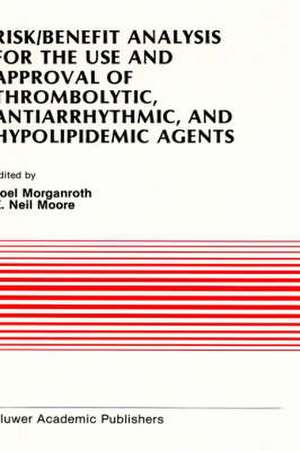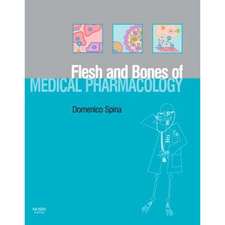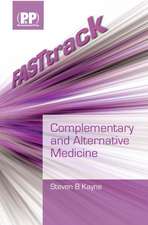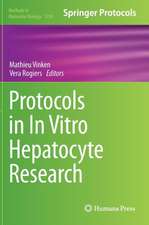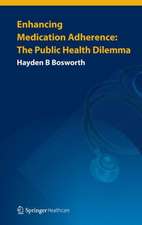Risk/Benefit Analysis for the Use and Approval of Thrombolytic, Antiarrhythmic, and Hypolipidemic Agents: Proceedings of the Ninth Annual Symposium on New Drugs & Devices, October 27 & 28, 1988: Developments in Cardiovascular Medicine, cartea 100
Editat de J. Morganroth, E. Neil Mooreen Limba Engleză Hardback – 30 iun 1989
| Toate formatele și edițiile | Preț | Express |
|---|---|---|
| Paperback (1) | 1410.97 lei 6-8 săpt. | |
| Springer Us – 10 oct 2011 | 1410.97 lei 6-8 săpt. | |
| Hardback (1) | 1419.03 lei 6-8 săpt. | |
| Springer Us – 30 iun 1989 | 1419.03 lei 6-8 săpt. |
Din seria Developments in Cardiovascular Medicine
- 5%
 Preț: 1484.53 lei
Preț: 1484.53 lei - 5%
 Preț: 375.17 lei
Preț: 375.17 lei - 5%
 Preț: 354.10 lei
Preț: 354.10 lei - 5%
 Preț: 376.43 lei
Preț: 376.43 lei - 5%
 Preț: 1098.27 lei
Preț: 1098.27 lei - 5%
 Preț: 1438.38 lei
Preț: 1438.38 lei - 5%
 Preț: 376.78 lei
Preț: 376.78 lei - 5%
 Preț: 368.37 lei
Preț: 368.37 lei - 5%
 Preț: 380.25 lei
Preț: 380.25 lei - 5%
 Preț: 2117.58 lei
Preț: 2117.58 lei - 5%
 Preț: 367.28 lei
Preț: 367.28 lei - 5%
 Preț: 366.56 lei
Preț: 366.56 lei - 5%
 Preț: 371.10 lei
Preț: 371.10 lei - 5%
 Preț: 370.94 lei
Preț: 370.94 lei - 5%
 Preț: 783.18 lei
Preț: 783.18 lei - 5%
 Preț: 713.18 lei
Preț: 713.18 lei - 5%
 Preț: 1098.27 lei
Preț: 1098.27 lei - 5%
 Preț: 375.49 lei
Preț: 375.49 lei - 5%
 Preț: 373.47 lei
Preț: 373.47 lei - 5%
 Preț: 723.93 lei
Preț: 723.93 lei - 5%
 Preț: 1104.13 lei
Preț: 1104.13 lei - 5%
 Preț: 2117.20 lei
Preț: 2117.20 lei - 5%
 Preț: 716.09 lei
Preț: 716.09 lei - 5%
 Preț: 372.03 lei
Preț: 372.03 lei - 5%
 Preț: 722.33 lei
Preț: 722.33 lei - 5%
 Preț: 660.07 lei
Preț: 660.07 lei - 5%
 Preț: 375.34 lei
Preț: 375.34 lei - 5%
 Preț: 1423.22 lei
Preț: 1423.22 lei - 5%
 Preț: 715.35 lei
Preț: 715.35 lei - 5%
 Preț: 790.69 lei
Preț: 790.69 lei - 5%
 Preț: 720.68 lei
Preț: 720.68 lei - 5%
 Preț: 3185.49 lei
Preț: 3185.49 lei - 5%
 Preț: 1418.27 lei
Preț: 1418.27 lei - 5%
 Preț: 784.64 lei
Preț: 784.64 lei - 5%
 Preț: 714.63 lei
Preț: 714.63 lei - 5%
 Preț: 370.74 lei
Preț: 370.74 lei - 5%
 Preț: 376.22 lei
Preț: 376.22 lei - 5%
 Preț: 660.85 lei
Preț: 660.85 lei - 5%
 Preț: 368.37 lei
Preț: 368.37 lei
Preț: 1419.03 lei
Preț vechi: 1493.72 lei
-5% Nou
Puncte Express: 2129
Preț estimativ în valută:
271.56€ • 294.88$ • 228.11£
271.56€ • 294.88$ • 228.11£
Carte tipărită la comandă
Livrare economică 22 aprilie-06 mai
Preluare comenzi: 021 569.72.76
Specificații
ISBN-13: 9780792302940
ISBN-10: 079230294X
Pagini: 298
Ilustrații: XVIII, 298 p.
Dimensiuni: 156 x 234 x 24 mm
Greutate: 0.65 kg
Ediția:1989
Editura: Springer Us
Colecția Springer
Seria Developments in Cardiovascular Medicine
Locul publicării:New York, NY, United States
ISBN-10: 079230294X
Pagini: 298
Ilustrații: XVIII, 298 p.
Dimensiuni: 156 x 234 x 24 mm
Greutate: 0.65 kg
Ediția:1989
Editura: Springer Us
Colecția Springer
Seria Developments in Cardiovascular Medicine
Locul publicării:New York, NY, United States
Public țintă
ResearchCuprins
I. Thrombolytic Agents: Clinical Trials ISSUES.- 1. Measurement of infarct size: effect of reperfusion with arterial blood.- 2. Pitfalls in the design and evaluation of clinical trials of intravenously administered cardiovascular drugs.- 3. The relative benefit and risks of intravenous streptokinase and tissue plasminogen activator in acute myocardial infarction.- 4. New agents and new insights for thrombolytic therapy in acute myocardial infarction: focus on anistreplase, urokinase, and prourokinase.- 5. Myocardial reperfusion: Role of adjunctive agents to improve reperfusion and prevent reperfusion injury.- Panel Discussion.- II. Thrombolytic Agents: Adjunctive Issues.- 6. Interactions between thrombolysis and sudden cardiac death.- 7. What are the overall strategies for post-thrombolytic care that include use of angioplasty?.- 8. Thrombolytic agents: biologic properties and issues regarding products derived by recombinant DNA technology.- Panel Discussion.- III. Risk vs. Benefit for Antiarrhythmic Drugs.- 9. What do new anti-arrhythmic agents have to show to establish a favorable risk versus benefit ratio?.- 10. What do new cardiovascular agents (e.g. antiarrhythmic drugs) have to show to establish a favorable risk versus benefit ratio to obtain approvability? — clinical viewpoint.- 11. Is it practical to develop a class III antiarrhythmic agent?.- Panel Discussion.- IV. Hypolipidemic Agents: Clinical & Regulatory Issues.- 12. What are the recommendations to the medical community to institute hypolipidemic therapy?.- 13. What are the comparative risks versus benefits for bile acid sequestrants, HMG CO-A reductase inhibitors, nicotinic acid, probucol, and fibric acid derivatives?.- 14. What levels of cholesterol should be studied and what should be the studydesigns?.- 15. Should a change in the atherosclerotic process be required for approval of new hypolipidemic agents?.- 16. How and when should long-term safety data be obtained for hypolipidemic agents?.- 17. What is required to gain approval of lipid altering drugs?.- Panel Discussion.- Participant List.
